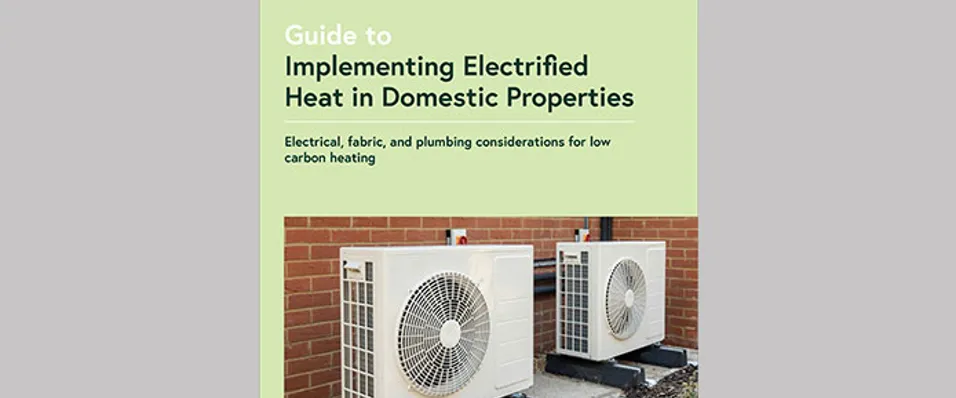
The upcoming Guide to Implementing Electrified Heat in Domestic Properties
According to a recent UK government consultation, heating of homes, businesses and industry is responsible for 37 per cent of the UK’s greenhouse gas emissions (BEIS (2018) Heat decarbonisation: overview of current evidence base, Fig.2.1).
With the government committing to reach net zero greenhouse gases by 2050, decarbonising heat is seen as one of the biggest challenges the UK faces in meeting its climate targets.
A fundamental part of the UK government’s strategy in meeting this challenge is to change from high carbon (natural gas and oil-fuelled) heating systems to low carbon heating including electrified heat. Existing buildings face a specific set of challenges, as installing low carbon heating tends to be more difficult and expensive than it is in new build.
The Government has announced its intentions to offer grants for £5,000 to replace gas boilers with heat pumps from April 2022 so the market and demand for heat pumps is anticipated to grow significantly.
The IET is publishing its Guide to Implementing Electrified Heat in Domestic Properties to support the market in this transition dispelling myths and guiding all those involved with decarbonising heat using electricity on a practical and multi-disciplinary level.
The publication includes insights into building fabric, thermal comfort, heat pumps, direct electric heating systems, domestic hot water considerations, system selection, electricity supply considerations, the business case for electrified heat and finally future insights. Useful schematic diagrams are also included in the appendix along with related standards to guide successful implementation.
